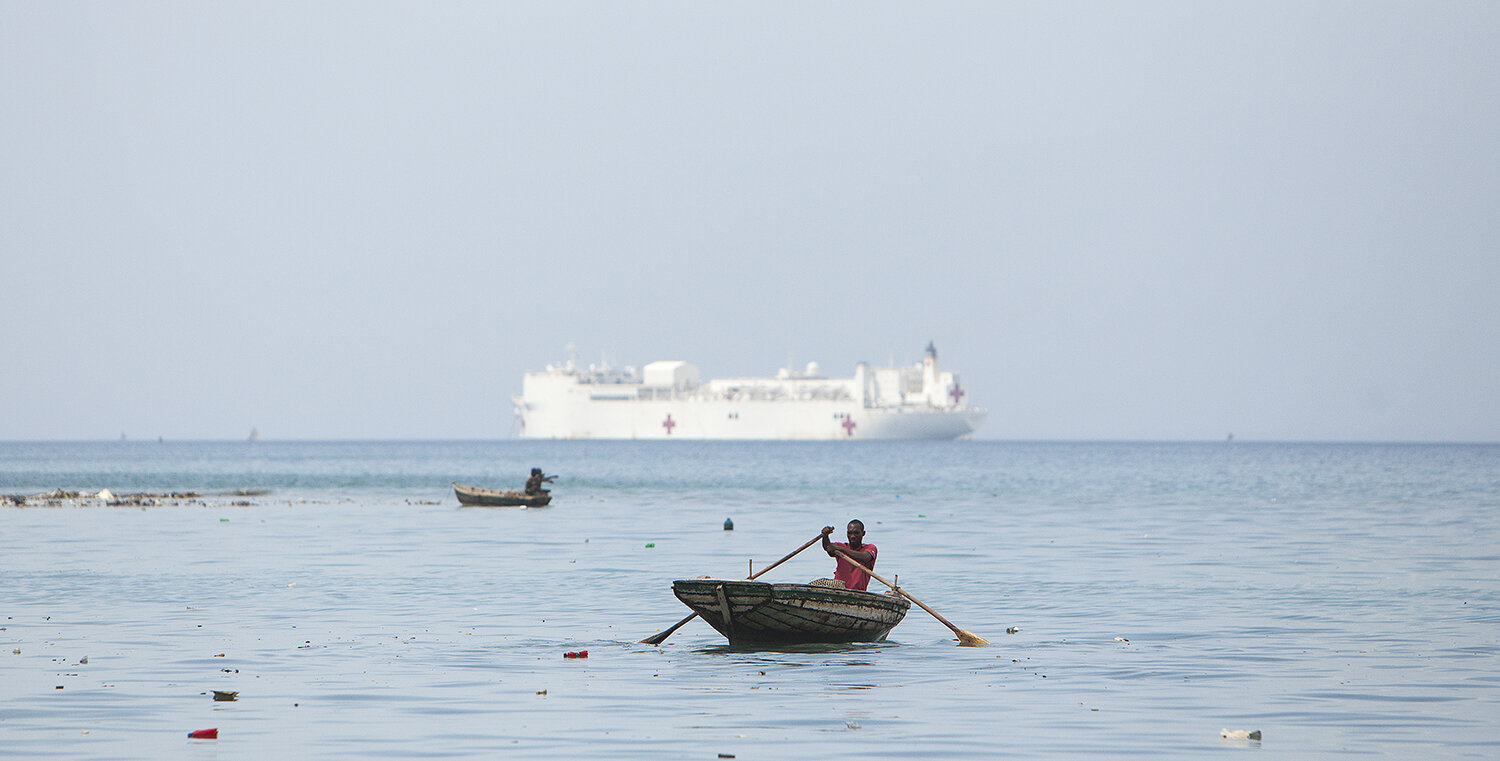Alan de Herrera
Freelance writer & photojournalist
Cataract surgery on a Navy ship
U.S. Navy's humanitarian work involves performing cataract surgeries in ports for countries in need
Written by Liz Hillman for EyeWorld
Produced and photography by Alan de Herrera
Though it might appear like a standard, well-equipped operating room, a closer look reveals tie rods on the floor for all equipment. On any given day, surgeries may be cancelled due to the weather.
That’s because this operating room is 1 of 12 located on the U.S. Navy’s USNS Comfort.
The nearly 900-foot-long ship with a home port in Norfolk, Virginia, is, like its sister ship the USNS Mercy on the West Coast, ready to deploy as a mobile, floating hospital in the event of a natural disaster or during wartime. In its otherwise “down time” though—and unbeknownst to the majority of civilians—these ships have sailed the seas conducting humanitarian work for decades.
“The majority of the American public has no idea that the Navy is doing this because they don’t get much publicity,” said photojournalist Alan De Herrera, pointing out that he was the only media member to do a lengthy embed on the USNS Comfort for its recent mission, Continuing Promise 2015. This mission made 11 stops to developing countries, bringing surgical and medical aid, as well as veterinary and construction services.
In addition to missions like Continuing Promise, the USNS Comfort provided support after Hurricanes Katrina and Rita and responded to New York City after the 9/11 attacks.
Wanting to drum up the recognition he thinks this type of work deserves, Mr. De Herrera spent a couple of weeks on the ship, capturing images from the operating room.
“It’s a feel-good story in the sense that our military is doing some really good stuff, and it’s nation building,” he said.
Lt. Cmdr. Hunter Stolldorf, MD, who is stationed at Naval Hospital Camp Lejeune in Jacksonville, North Carolina, went for his first 6-month mission on the USNS Comfort last year where he completed 200 cases.
He acknowledged that many of his civilian counterparts might not think that’s a lot during such a timeframe, but he pointed out that he was competing for OR time with every other subspecialty surgeon on the ship. The majority of Dr. Stolldorf’s cases were cataract surgeries (65%), 30% were pterygium, and 5% were strabismus.
To perform cataract surgeries on the ship and in ports for countries that included Haiti, Guatemala, Jamaica, Nicaragua, and Colombia, Dr. Stolldorf had to learn an “old-school technique” that is generally not taught in U.S. residency programs.
That technique, sutureless manual small incision cataract surgery (MSICS), removes the cataract as a whole, rather than breaking it up with phacoemulsification. Dr. Stolldorf said this latter, more modern technique, which has become the standard of cataract surgery in the U.S., is not as safe for most patients in these countries who generally have more advanced cataracts.
While the OR itself is “top notch,” despite its relatively unusual setting, Dr. Stolldorf said performing surgery on a ship presents its own set of challenges.
“The tides and currents affected if we could do surgery or not. The captain of the ship had to know when I was doing surgery under a microscope so that he could pay much closer attention to the movements of the ship,” Dr. Stolldorf said.
Surgery was delayed for a couple of hours due to rougher waters at least once during the trip.
“What I thought was fascinating about [this work was] the importance of our eyesight,” Mr. De Herrera said, noting that he’s always had an interest in medicine and has experienced the OR environment before, photographing cleft lip procedures. “The individuals they were helping would eventually lose their sight, and that obviously would be devastating for anyone in that situation.
“Somewhere like Haiti—it’s such a depressed country to begin with—to not have the opportunity to get something like that, which is an easy procedure to repair and fix, would be devastating,” he continued, saying that many in these countries still go without treatment as only a fraction can be treated on these missions.
Attending the U.S. Naval Academy in 1996, completing his medical education at the University of Virginia, and receiving specialized training in ophthalmology at the Naval Medical Center San Diego, Dr. Stolldorf said he always had an interest in doing humanitarian work.
“I think that as a surgeon this is a chance to do pure medicine for the sake of good,” he said. “You help people and give them what they need in a world where, unfortunately, things like money, reimbursements, and business get in the way of why a lot of people went into medicine in the first place.”
While patients would often thank him for his work, Dr. Stolldorf said he would have turned that thank you back toward them if there wasn’t a language barrier.
“I benefitted just as much as them because it was extremely rewarding,” he said.
Though rewarding for many who do this type of work from an individual standpoint, why is the U.S. military’s involvement specifically in such missions important? Dr. Stolldorf said it’s the United States’ way of telling its neighbors “we care about you.”
“That’s what it’s all about, building bridges between us and our neighbors,” he said.
Dr. Stolldorf said surgeons do not have to be active duty military to participate on missions with the USNS Comfort. Project HOPE, for example, just completed its 35th humanitarian mission with the Department of Defense by sending medical volunteers on Continuing Promise.



